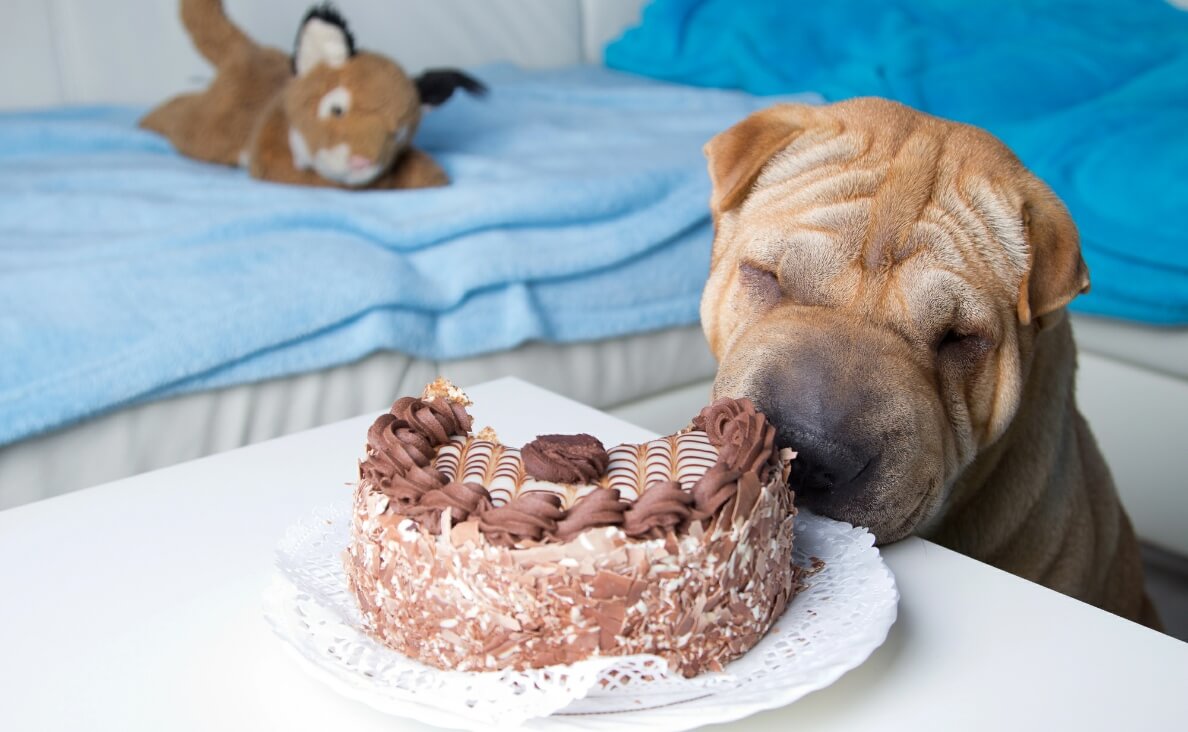
The holidays are a joyful season filled with family gatherings, laughter, and plenty of sweet treats. But what’s festive for humans can be dangerous—even life-threatening—for our dogs. Chocolate is one of the most common holiday hazards for pets, and every year veterinary clinics see a surge in cases of chocolate poisoning.
If your pup manages to sneak a cookie plate or find their way into the candy stash, you need to know what to do right away. Acting quickly can make all the difference. In this article, we’ll explain what to do if your dog eats chocolate, the symptoms to watch for, and how to keep your furry friend safe this holiday season.
Why Chocolate Is Toxic to Dogs
Chocolate contains two compounds that are toxic to dogs: theobromine and caffeine. While humans metabolize these substances easily, dogs process them much more slowly. This allows the toxins to build up in their system, leading to poisoning.
Not all chocolate is equally dangerous. The darker and more bitter the chocolate, the higher the theobromine content:
- Baking chocolate and dark chocolate: Highly toxic, even in small amounts.
- Milk chocolate: Toxic at moderate amounts, depending on your dog’s size.
- White chocolate: Contains very little theobromine but still carries risks due to fat and sugar.
There is no “safe” amount of chocolate for dogs. Even small bites can be harmful, and larger quantities may be life-threatening.
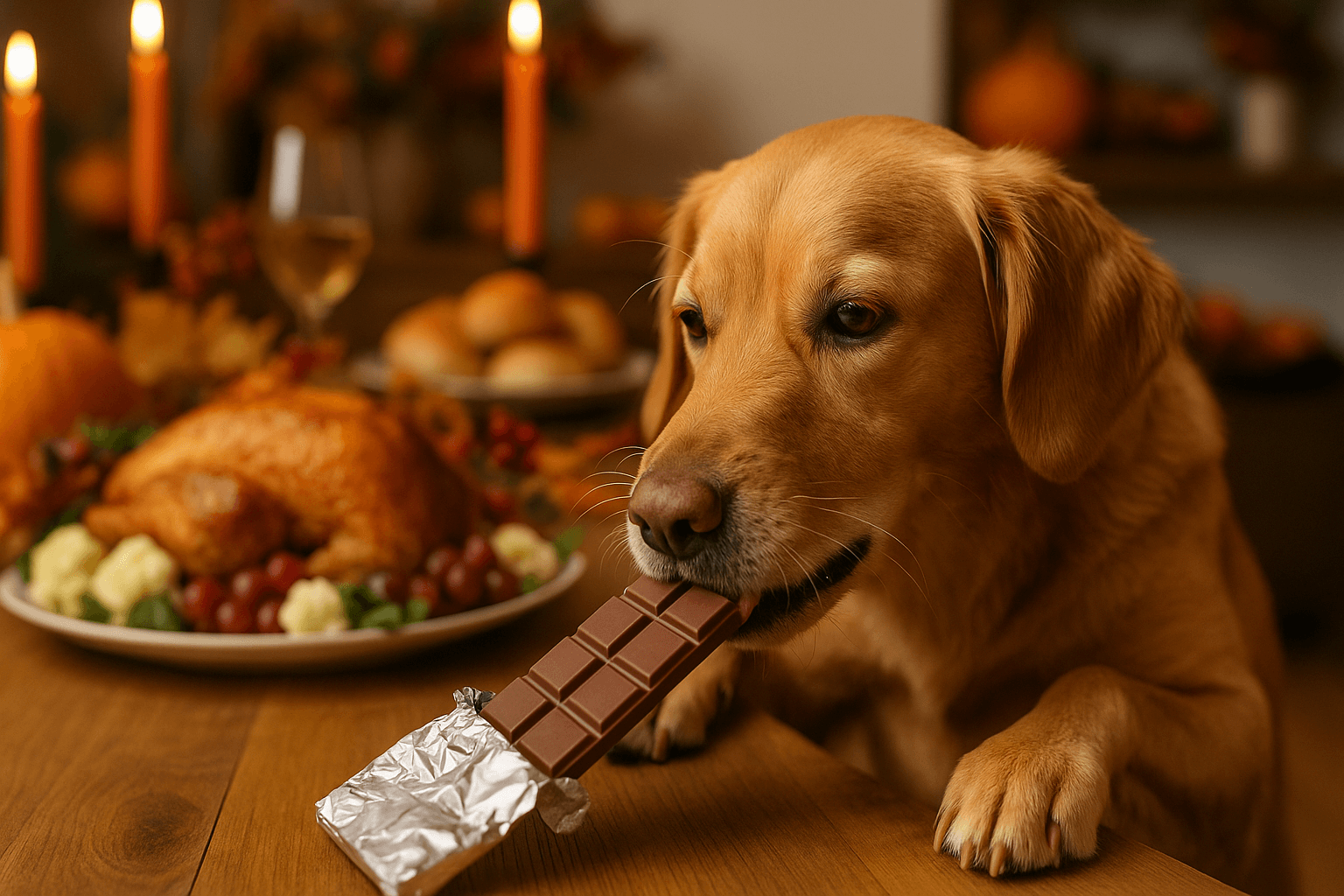
Symptoms of Chocolate Poisoning in Dogs
The signs of chocolate poisoning can vary depending on your dog’s size, the type of chocolate, and the amount consumed. Symptoms often appear within 6 to 12 hours after ingestion.
Watch closely for these warning signs:
- Vomiting and diarrhea
- Restlessness or hyperactivity
- Rapid breathing or panting
- Increased heart rate
- Muscle tremors
- Seizures
- Collapse
If your dog shows any of these symptoms—or if you know they’ve eaten chocolate—treat the situation as an emergency.
What to Do Immediately If Your Dog Eats Chocolate
If you catch your dog in the act or discover missing chocolate, don’t wait to see what happens. Quick action is essential.
Step 1: Stay calm. Panicking won’t help your dog, and you’ll need to think clearly.
Step 2: Call your veterinarian or the ASPCA Animal Poison Control Center at (888) 426-4435 right away. (Please note: a consultation fee may apply.)
Step 3: Gather important details. Write down or remember:
- What type of chocolate your dog ate
- How much they may have consumed
- Your dog’s weight and breed
Step 4: Follow professional instructions. Your vet or poison control may instruct you to bring your dog in immediately, or in some cases, to induce vomiting at home. Never attempt this without guidance from a professional.
👉 The most important takeaway: If your dog eats chocolate, don’t “wait and see.” Always contact your vet or the ASPCA for expert advice.
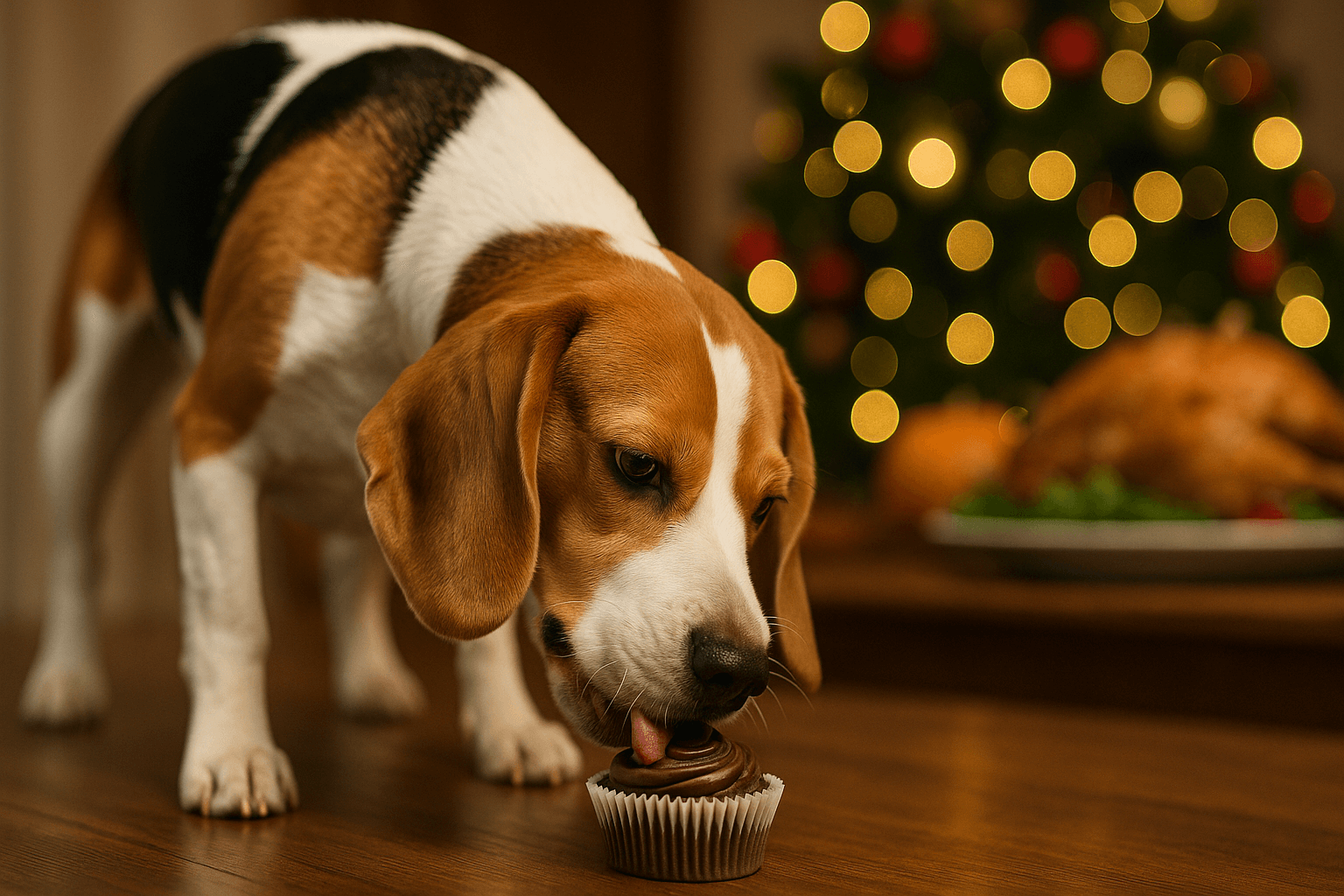
When to Go to the Emergency Vet
Some situations call for immediate emergency care—do not wait to see if symptoms develop. Head to your vet or nearest emergency clinic if:
- Your dog ate baking chocolate or dark chocolate
- A large quantity of any type of chocolate was consumed
- Your dog is very small and ate even a modest amount
- Your dog is showing severe symptoms such as tremors, seizures, or collapse
During the holidays, clinics see a spike in chocolate-related emergencies. Don’t hesitate to call ahead and let them know you’re coming. If your vet isn’t available, you can call the ASPCA Pet Poison Control Center at (888) 426-4435 for immediate guidance.
How Vets Treat Chocolate Poisoning
If your dog is treated quickly, the prognosis is often very good. Here are some of the common treatments your veterinarian may use:
- Inducing vomiting to remove the chocolate from the stomach
- Administering activated charcoal to prevent further absorption of toxins
- IV fluids to flush the system and support hydration
- Medications to control heart rate, blood pressure, or seizures if needed
The key is timing—the sooner your dog receives treatment, the better their chances of recovery.
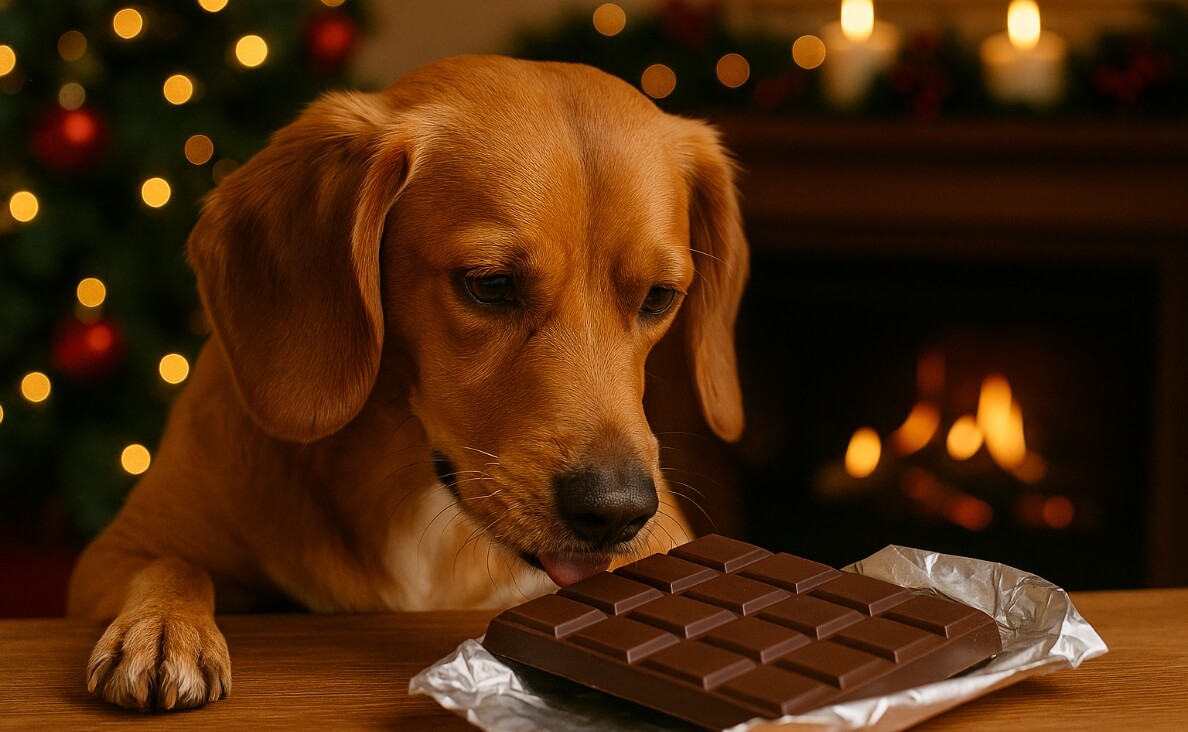
Preventing Chocolate Poisoning
Prevention is always better than an emergency trip to the vet. During the holidays, extra vigilance is necessary.
Here are simple ways to keep your dog safe:
- Store candy, brownies, cookies, and desserts in sealed containers or high cabinets.
- Keep wrapped gifts that contain chocolate out of reach.
- Remind children and guests not to share human treats with your pup.
- Provide dog-safe holiday treats instead, such as pumpkin biscuits or peanut butter snacks.
Holiday Safety Reminder
With the holidays just around the corner, it’s the perfect time to remind pet parents about this common hazard. Whether it’s a bowl of Halloween candy, Thanksgiving pies, or Christmas gift boxes, chocolate is everywhere—and dogs are clever when it comes to sniffing out treats.
Make a plan now to keep sweets out of paw’s reach. Stock up on dog-friendly holiday snacks so your pup feels included in the celebrations without being exposed to danger.
With a little prevention and quick action if needed, you can enjoy the holidays knowing your furry family member is safe.
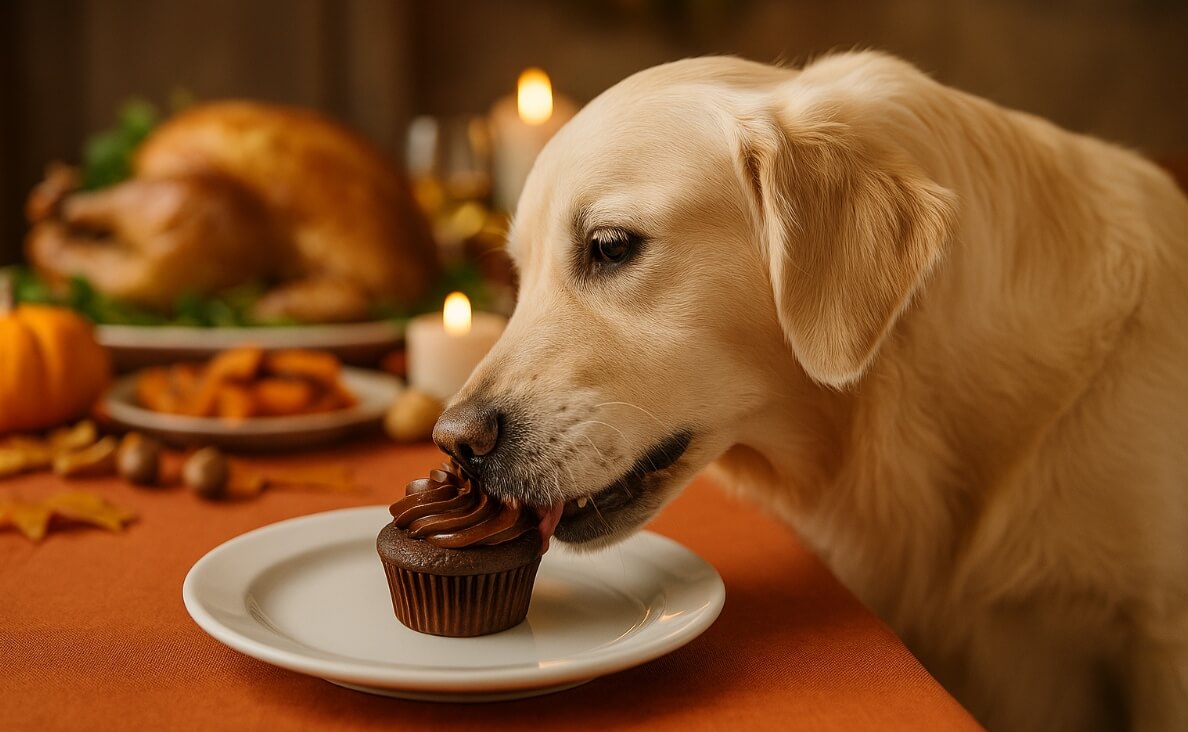
Frequently Asked Questions
Can dogs eat chocolate?
No. Chocolate contains theobromine and caffeine, which are toxic to dogs.
How much chocolate is toxic to dogs?
Even small amounts can be harmful, especially dark or baking chocolate. The risk increases with the dog’s size and weight.
What happens if my dog eats chocolate but seems fine?
Symptoms can be delayed. Call your veterinarian or the ASPCA at (888) 426-4435 for guidance.
What are the first signs of chocolate poisoning in dogs?
Vomiting, diarrhea, restlessness, rapid breathing, and increased heart rate.
Conclusion
Chocolate and dogs simply don’t mix. The good news is that if you know what to do if your dog eats chocolate, you can act quickly and protect their health.
- Recognize the symptoms.
- Call your veterinarian or the ASPCA Animal Poison Control Center at (888) 426-4435 right away.
- Keep chocolate safely out of reach during the holiday season and all year long.
Your pup counts on you to keep them safe. With a little awareness, you can make sure the holidays stay joyful for the whole family.
Have you ever had a holiday scare with your pup getting into chocolate? Share your story in the comments—we’d love to hear from you!

 How to Help a Stray or Lost Dog
How to Help a Stray or Lost Dog What Everyone Should Know About Puppy Mills
What Everyone Should Know About Puppy Mills [FREE DOWNLOAD] Do All of Those Daycare Dogs Get Along?
[FREE DOWNLOAD] Do All of Those Daycare Dogs Get Along? What You Need to Know About ID Tags to Keep Your Dog Safe
What You Need to Know About ID Tags to Keep Your Dog Safe 16 Compelling Reasons to Keep Your Dog on a Leash (Even If You Think They are Trustworthy)
16 Compelling Reasons to Keep Your Dog on a Leash (Even If You Think They are Trustworthy)






Leave a Reply